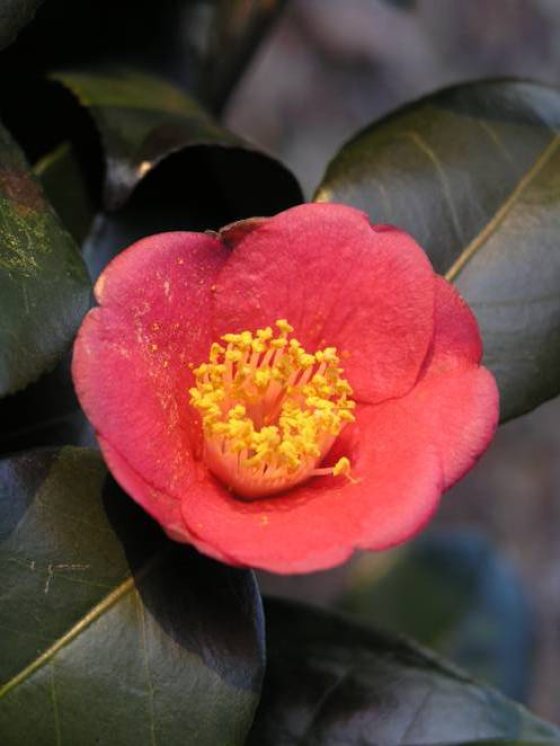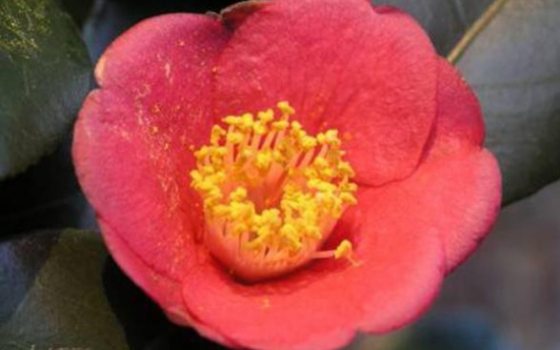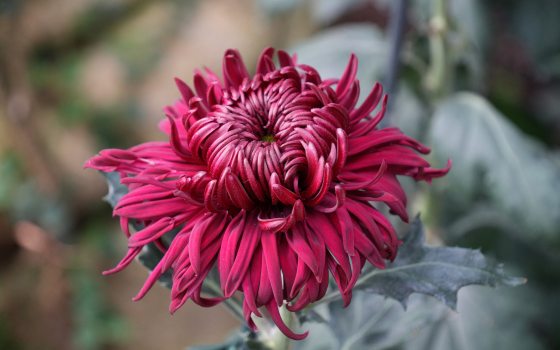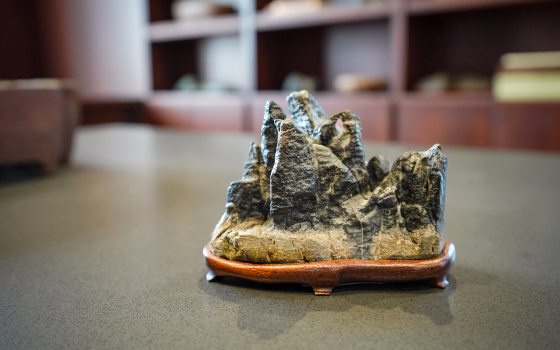Camellias are evergreen shrubs with dark green lustrous leaves that can grow to a height of 20 feet. They bloom in either the late fall or early spring and can add beautiful color to the garden when most other plants have yet to begin or have finished flowering. Camellias are native to Asia and most are hardy to zone 7 or 8 and occasionally to 6b, the zone in which Longwood Gardens is located.
Learn about the goals and process of our camellia breeding program.
Since Camellias hold their leaves year round, the leaves are continually transpiring and losing water. During the cold winter months when the ground becomes frozen, roots cannot absorb water from the soil. Therefore, desiccation is the primary cause of winter damage and death of Camellias in our area (excluding deer). Considering this, the location of camellias in the landscape will have a profound effect on winter survival. Protection from the winter sun and winds is critical. This can be accomplishes by planting Camellias on the north side of a building or house. An established tree line or large evergreen conifer can also be used as a moderate form of winter protection. The northern side of a structure will have the most shade during the winter months.

Other than planting location, genetics play a significant role in the winter hardiness of Camellias. Longwood Gardens established hardiness trials and a breeding program in the early 1960’s to evaluate and develop camellias that can tolerate colder winters. These efforts have lead to the release of two of the hardiest Camellias ‘Longwood Centennial’ and ‘Longwood Valentine’. As Camellia breeding and hardiness evaluation continue at Longwood Gardens, the selection of commercially available hardy camellias will increase. To learn more about the actual breeding process please watch our featured Camellia breeding video above.



